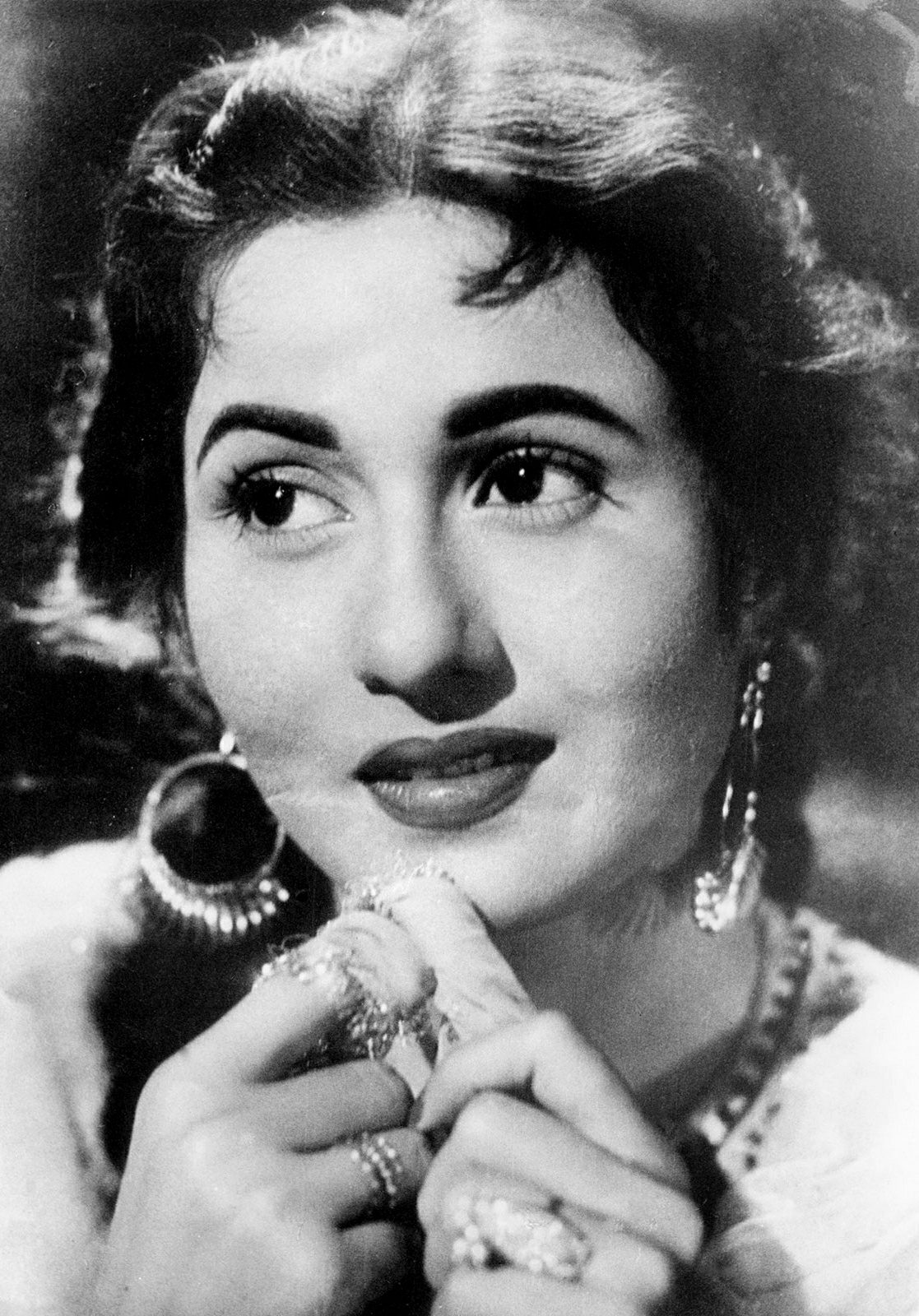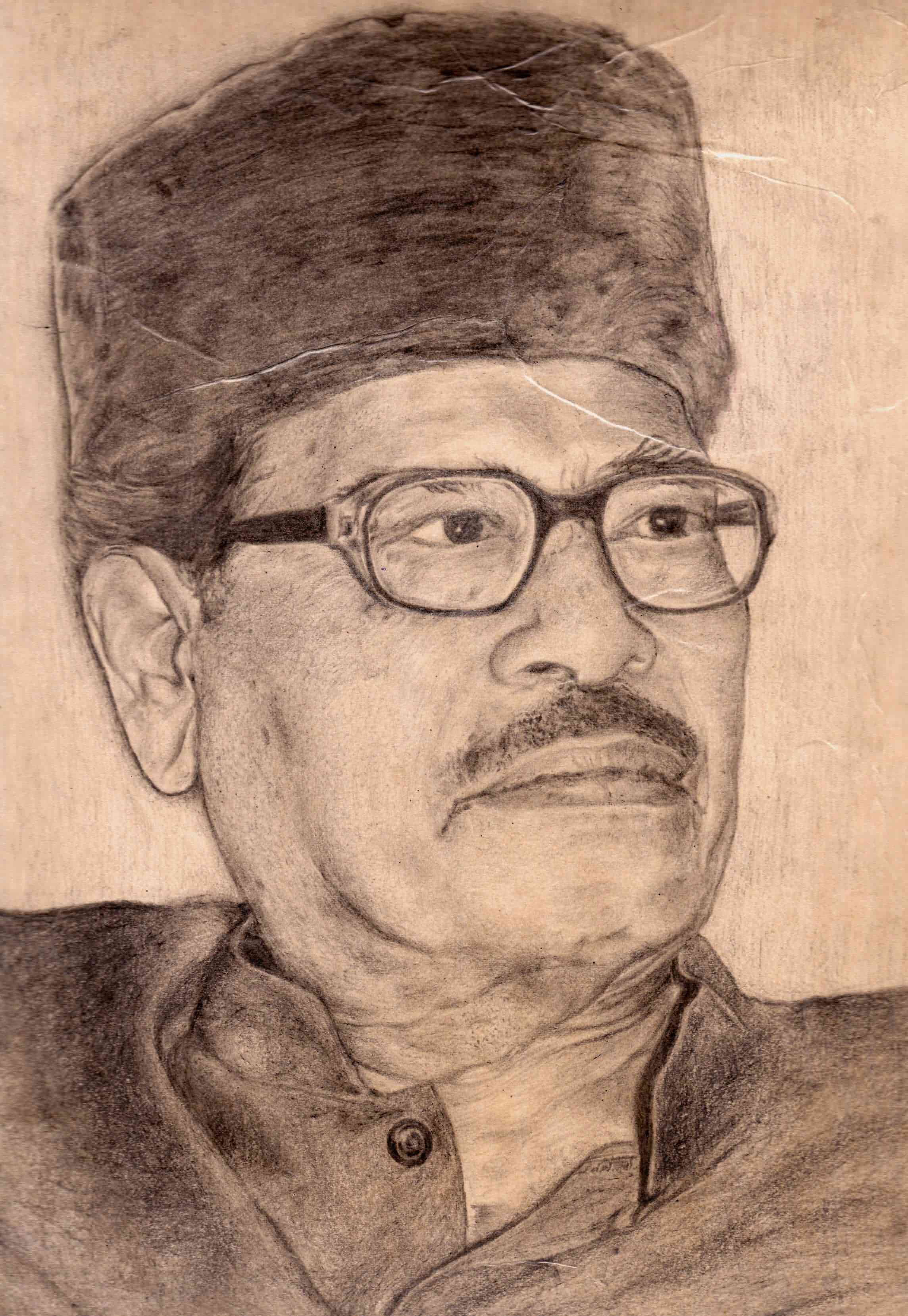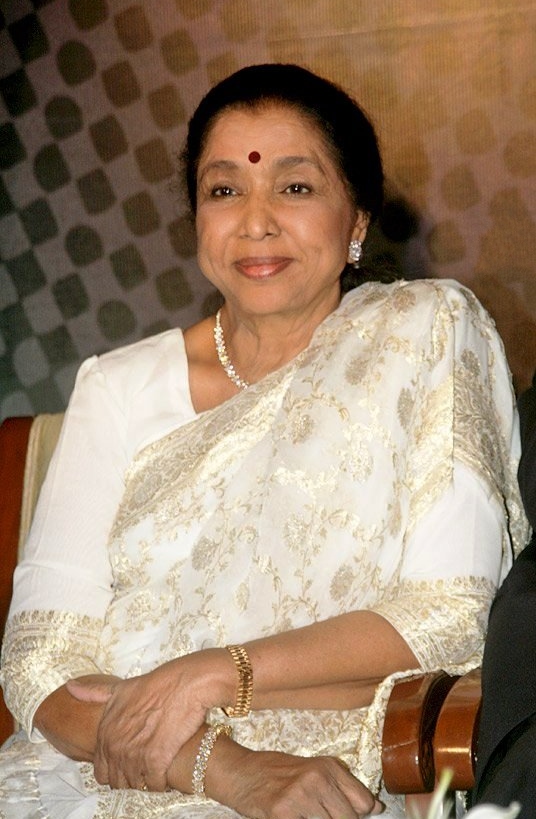|
Barsaat Ki Raat
''Barsaat Ki Raat'' () is a 1960 Indian Hindi-language romantic musical film directed by P. L. Santoshi and produced by R. Chandra. Starring Madhubala, Bharat Bhushan and Shyama, the film is considered a defining example of romantic musical film genre. A Muslim-social set amongst the erudite and cultured urban Muslims of independent India, ''Barsaat Ki Raat'' revolves around two lovers Shabnam (Madhubala) and Amaan Hyderabadi (Bhushan), who strive to be together but the society does not approve of them. Upon its release, the film became a blockbuster success, the second highest earner of 1960, the twenty highest earner of the 1960s at the Indian box office, and one of the top hundred highest-grossers of all time (when adjusted for inflation). ''Barsaat Ki Raat'' got a positive feedback from contemporary critics. The Roshan-composed soundtrack, considered one of the finest in the Indian cinema, was singled out for praise by both critics and audience. One of the tracks, "Zind ... [...More Info...] [...Related Items...] OR: [Wikipedia] [Google] [Baidu] |
Madhubala
Madhubala (born Mumtaz Jehan Begum Dehlavi; 14 February 1933 – 23 February 1969) was an Indian actress and producer who worked in Hindi-language films. She ranked as one of the highest-paid entertainers in India in the post-independence era, that coincided with the rise of Indian cinema on global levels. In a career spanning more than 20 years, Madhubala was predominantly active for only a decade but had appeared in over 60 films by the time of her death in 1969. Born and raised in Delhi, Madhubala relocated to Bombay with her family when she was 8 years old and shortly after appeared in minor roles in a number of films. She soon progressed to leading roles in the late 1940s, and earned success with the dramas '' Neel Kamal'' (1947) and ''Amar'' (1954), the horror film '' Mahal'' (1949), and the romantic films ''Badal'' (1951) and ''Tarana'' (1951). Following a brief setback, Madhubala rose to international prominence with her roles in the comedies '' Mr. & Mrs. '55'' (1955) ... [...More Info...] [...Related Items...] OR: [Wikipedia] [Google] [Baidu] |
Binaca Geetmala
''Binaca Geetmala'' was a weekly countdown show of top filmi songs from Hindi cinema. It was popular and had millions of listeners. ''Binaca Geetmala'' was broadcast on Radio Ceylon from 1952 to 1988 and then shifted to the Vividh Bharati The Vividh Bharati Service (VBS; ) of All India Radio was conceptualized to combat Radio Ceylon in 1967. Due to the Indian Government stopping its short wave relay centers, VBS is only available on the Internet. Vividh Bharati radio channel wa ... Service of All India Radio network in 1989 where it ran until 1994. It was the first radio countdown show of Indian film songs,''Back on air with Geetmala''. Bella Jaisinghani. ''The Financial Express (India)'', Sunday, 11 March 2001. Transcript available online at , accessed online on 29 July 2006 and has been quoted as being the most popular radio program in India during its run. Its name reflects its sponsorship by Binaca (brand), Binaca. ''Binaca Geetmala'', and its subsequent incarnations ... [...More Info...] [...Related Items...] OR: [Wikipedia] [Google] [Baidu] |
List Of Bollywood Films Of 1960
A list of films produced by the Bollywood film industry based in Mumbai in 1960 Highest-grossing films The ten highest-grossing films at the Indian Box Office in 1960: A-D E-M N-Z References {{reflist External links Bollywood films of 1960at the Internet Movie Database * Indian Film Songs from the Year 1960- A look back at 1960 with a special focus on Hindi film songs 1960 Bollywood Hindi cinema, popularly known as Bollywood and formerly as Bombay cinema, refers to the film industry based in Mumbai, engaged in production of motion pictures in Hindi language. The popular term Bollywood, is a portmanteau of "Bombay" ... Films, Bollywood ... [...More Info...] [...Related Items...] OR: [Wikipedia] [Google] [Baidu] |
Net Income
In business and accounting, net income (also total comprehensive income, net earnings, net profit, bottom line, sales profit, or credit sales) is an entity's income minus cost of goods sold, expenses, depreciation and amortization, interest, and taxes for an accounting period. It is computed as the residual of all revenues and gains less all expenses and losses for the period,Stickney, et al. (2009) Financial Accounting: An Introduction to Concepts, Methods, and Uses. Cengage Learning and has also been defined as the net increase in shareholders' equity that results from a company's operations.Needles, et al. (2010) Financial Accounting. Cengage Learning. It is different from gross income, which only deducts the cost of goods sold from revenue. For households and individuals, net income refers to the (gross) income minus taxes and other deductions (e.g. mandatory pension contributions). Definition Net income can be distributed among holders of common stock as a dividend or ... [...More Info...] [...Related Items...] OR: [Wikipedia] [Google] [Baidu] |
Crore
A crore (; abbreviated cr) denotes ten million (10,000,000 or 107 in scientific notation) and is equal to 100 lakh in the Indian numbering system. It is written as 1,00,00,000 with the local 2,2,3 style of digit group separators (one lakh is equal to one hundred thousand, and is written as 1,00,000). It is widely used both in official and other contexts in Afghanistan, Bangladesh, Bhutan, India, Myanmar, Nepal, Pakistan, and Sri Lanka. It is often used in Bangladeshi, Indian, Pakistani, and Sri Lankan English. Money Large amounts of money in Bangladesh, India, Nepal, and Pakistan are often written in terms of ''Koti'' or ''crore''. For example (one hundred and fifty million) is written as "fifteen ''crore'' rupees", "15 crore" or "". In the abbreviated form, usage such as "15 cr" (for "15 ''crore'' rupees") is common. Trillions (in the short scale) of money are often written or spoken of in terms of ''lakh crore''. For example, ''one trillion rupees'' is equivalent to: * ... [...More Info...] [...Related Items...] OR: [Wikipedia] [Google] [Baidu] |
Indian Rupee
The Indian rupee ( symbol: ₹; code: INR) is the official currency in the republic of India. The rupee is subdivided into 100 ''paise'' (singular: ''paisa''), though as of 2022, coins of denomination of 1 rupee are the lowest value in use whereas 2000 rupees is the highest. The issuance of the currency is controlled by the Reserve Bank of India. The Reserve Bank manages currency in India and derives its role in currency management on the basis of the Reserve Bank of India Act, 1934. Etymology The immediate precursor of the rupee is the ''rūpiya''—the silver coin weighing 178 grains minted in northern India by first Sher Shah Suri during his brief rule between 1540 and 1545 and adopted and standardized later by the Mughal Empire. The weight remained unchanged well beyond the end of the Mughals until the 20th century. Though Pāṇini mentions (), it is unclear whether he was referring to coinage. ''Arthashastra'', written by Chanakya, prime minister to the first Maurya ... [...More Info...] [...Related Items...] OR: [Wikipedia] [Google] [Baidu] |
Gross Revenue
In accounting, revenue is the total amount of income generated by the sale of goods and services related to the primary operations of the business. Commercial revenue may also be referred to as sales or as turnover. Some companies receive revenue from interest, royalties, or other fees. This definition is based on IAS 18. "Revenue" may refer to income in general, or it may refer to the amount, in a monetary unit, earned during a period of time, as in "Last year, Company X had revenue of $42 million". Profits or net income generally imply total revenue minus total expenses in a given period. In accounting, in the balance statement, revenue is a subsection of the Equity section and revenue increases equity, it is often referred to as the "top line" due to its position on the income statement at the very top. This is to be contrasted with the "bottom line" which denotes net income (gross revenues minus total expenses). In general usage, revenue is the total amount of income by the ... [...More Info...] [...Related Items...] OR: [Wikipedia] [Google] [Baidu] |
Kamal Barot
Kamal Barot is an Indian female playback singer mainly worked in Bollywood. Career Born on 18 November 1938 (Dar es-Salaam at Tanzania) and She debuted in Bollywood in 1957 with the film Sharada. She later went on to sing 140 songs in 117 films. One of her most popular and distinctive solo was in the film, Ramu Dada, Suna hai jabse mausam hai pyaar ke kaabil. She usually sang duets with either Lata Mangeshkar, or Asha Bhosle. But she made a memorable collaboration with great Mukesh. They together have sung songs like "Chand Kaisa Hoga" from Rocket Girl (1961), "Hum Bhi Kaho Gaye" from Madam Zorro (1964). Other songs from her vocal include "Tera Nikhra Nikhra Chehra" and "Dhadka To Hoga Dil Huzoor" from C.I.D. 909 with legends Asha Bhosle and Mahendra Kapoor, composed by maestro O. P. Nayyar. She sang some very successful female-female duets with top singers. Most popular of them is "Hansta Hua Noorani Chehra", a dance song from Parasmani (1963) and Kamal's co-singer was Lata Ma ... [...More Info...] [...Related Items...] OR: [Wikipedia] [Google] [Baidu] |
Suman Kalyanpur
Suman Kalyanpur (born as Suman Hemmadi;January 28th 1937) is an Indian playback singer, one of the best-known and most respected playback singers in India. Her voice was often mistaken to be that of Lata Mangeshkar. Suman Kalyanpur's career started in 1954 and was very popular singer in the 1960s and 1970s. She recorded songs for movies in several languages besides Hindi, Marathi, Assamese, Gujarati, Kannada, Maithili, Bhojpuri, Rajasthani, Bengali, Odia and Punjabi. She is considered among the popular singers of her prime time. Personal life ;Early life Suman Kalyanpur was born as Suman Hemmadi on 28 January 1937 in Dhaka (now in Bangladesh). Suman Kalyanpur's father Shankar Rao Hemadi hailed from a Saraswat Brahmin family belonging to Mangalore. Hemmadi is a village in Kundapur Taluk of Udupi District, Karnataka. He served on a top post in the Central Bank of India and was posted to Dhaka for a very long period. Apart from father and mother Seeta Hemmadi, there were 5 d ... [...More Info...] [...Related Items...] OR: [Wikipedia] [Google] [Baidu] |
Manna Dey
Prabodh Chandra Dey (May 1, 1919 − October 24, 2013), known by his stage name Manna Dey, was an internationally acclaimed and celebrated Indian playback singer, music director, and a musician. As a classical vocalist, he belonged to the Bhendibazaar Gharana and was trained under Ustad Aman Ali Khan. He is considered one of the most versatile and celebrated vocalists of the Hindi film industry, often credited with the success of Indian classical music in Hindi commercial movies. As a musician, Dey is best known for infusing Indian classical music in a pop framework that ushered the golden period in Hindi cinema. In a career spanning over five decades, Dey recorded total 3,047 songs, though most primarily in Bengali and Hindi; Dey also sang in 14 other Indian languages, including Bhojpuri, Punjabi, Assamese, Gujarati, Kannada, Malayalam, and Chhattisgarhi. The mid-50s to 70s were considered the peak of his musical career. The Government of India honored him with the Padma ... [...More Info...] [...Related Items...] OR: [Wikipedia] [Google] [Baidu] |
Sudha Malhotra
Sudha Malhotra is an Indian playback singer. She also acted in some Bollywood films and as a playback singer, worked in popular Bollywood movies in the 1950s and 1960s, like ''Arzoo'', ''Dhool Ka Phool'', ''Ab Dilli Door Nahin'', ''Girl Friend'', ''Barsat Ki Raat'', ''Didi'', ''Kala Pani'', ''Prem Rog'' and ''Dekh Kabira Roya''. She was last heard in Raj Kapoor's ''Prem Rog'' (1982) in the song "Yeh Pyar tha ya kuch aur tha".Notes from the past ''The Tribune'', 12 October 2008. Apart from Hindi songs, Sudha sang many popular Marathi songs (Bhavgeet) with Arun Date. She was awarded the by |
Asha Bhosle
Asha Bhosle (; Mangeshkar; born 8 September 1933) is an Indian playback singer, entrepreneur and occasional actress and television personality who predominantly works in Indian Cinema. Known for her versatility, she has been described in the media as one of the most influential and successful singers in Hindi Cinema. In her career spanning over eight decades she has recorded songs for films and albums in various Indian languages and received several accolades including two National Film Awards, four BFJA Awards, eighteen Maharashtra State Film Awards, nine Filmfare Awards including a Lifetime Achievement Award and a record seven Filmfare Awards for Best Female Playback Singer, in addition to two Grammy nominations. In 2000, she was honoured with the Dadasaheb Phalke Award, India's highest award in the field of cinema. In 2008, she was honoured by the Government of India with the Padma Vibhushan, the second-highest civilian honour of the country. Additionally she holds the ... [...More Info...] [...Related Items...] OR: [Wikipedia] [Google] [Baidu] |



